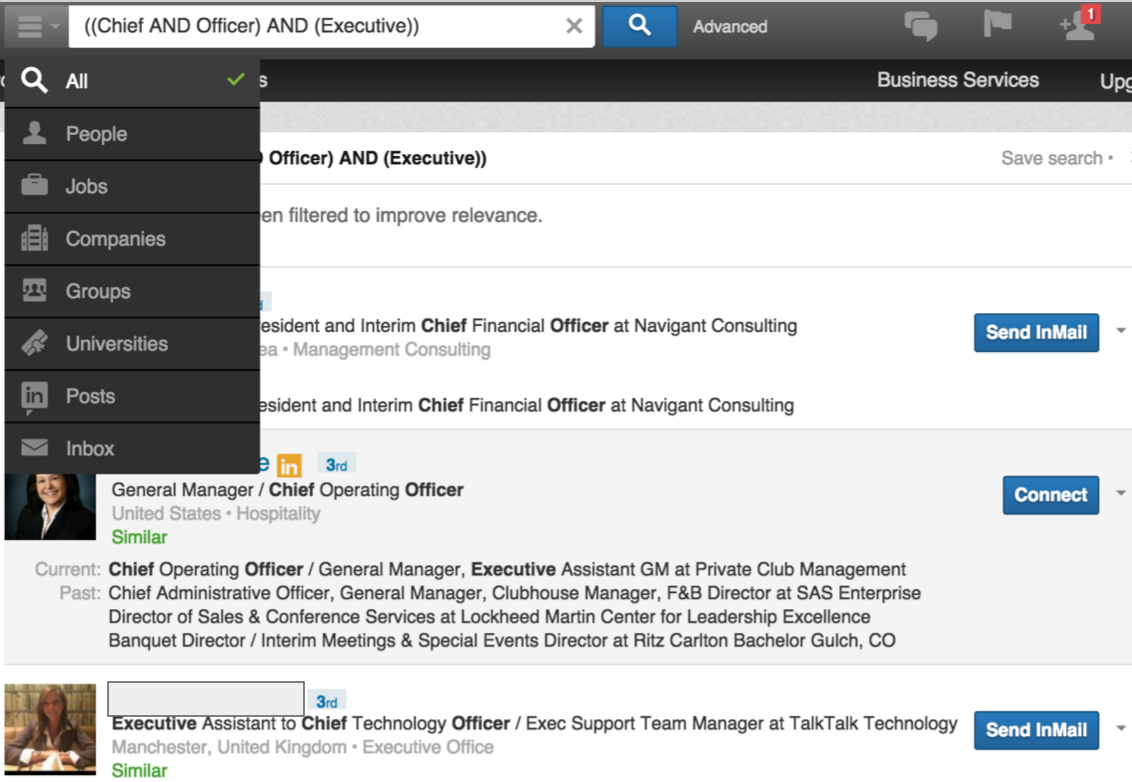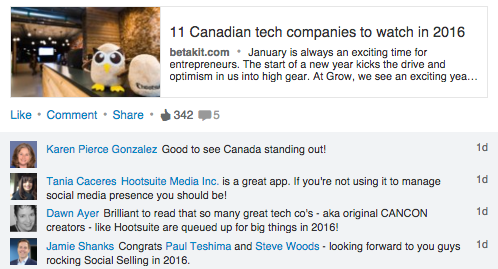The 4-Step Social Selling Routine
 As a sales leader, you know that social selling is an important part of your team’s sales process.
As a sales leader, you know that social selling is an important part of your team’s sales process.
But one of the biggest challenges you may face is how are you going to explain social selling to your sales team from a tactical perspective?
How will you outline what social selling will look like?
The social selling routine
First, your sales team has to understand the social selling routine. Let’s face it. Salespeople will naturally gravitate toward the path of least resistance. So they need to know how long they’ll need to spend on social selling.
In reality, sales professionals should spend no more than 30 to 60 minutes a day leveraging all forms of social selling — any longer than that will distract from their current sales process.
Once they understand the time commitment involved, it’s time to explain the social selling routine to them in more detail.
Every deal, every day
Organizations need to bring forward the motto “EVERY DEAL, EVERY DAY.” This phrase was coined by social selling leader Jill Rowley. It means that every day, you’re adding social to your current sales process. And for every deal or named account, you need to apply some form of social selling to help it move forward.
The social selling routine is made up of four components, represented by the acronym FEED, which stands for Find, Educate, Engage, and Develop. We’ll go through each of these in more detail.
1. Find
In this step, you need to identify the “decision-makers, champions and influencers” or “mobilizers” in your industry. There are three levels of people you need to find:
-
Level 1: the people
-
Level 2: the corporations
-
Level 3: the influencers and rock stars of that industry.
This step is about finding and leveraging social to ensure that the CRM data of your named accounts maps direct one-to-one relationships with your social network. This means that if you’re assigned 50 accounts, you’d better have socially assigned those 50 accounts and all the people who work there – those relationships between social and CRM need to be one-to-one.
A great way to ‘Find’ these key prospects is to use LinkedIn boolean search. Boolean refers to a logic system that uses common words and symbols in a very specific way. Parentheses, AND, OR, +, – and quotation marks are among the tools you can use to find the exact leads you are looking for.
Example: ((Chief AND Officer) AND (Executive OR (Operational OR Operations) OR Marketing) OR (CEO OR COO OR CMO))

2. Educate
The second step is educate. In this step, sales professionals recognize the finding from Corporate Visions that 74% of deals are awarded to you, the sales professional, because you were the first to provide value and insight.
Since you now know it’s critical to be first, and if marketing has done a great job to map the content consumption story, this helps sales to understand that content influences the sales process throughout the sales cycle.
So as a sales professional, it’s critical that you’re constantly finding great insights to educate your buyer — replacing reading your email with reading articles you think help that buyer shape their journey. This means that for 10 to 15 minutes a day, you’re reading blogs, watching videos, and studying infographics that you think would be helpful for your buyer, and would help them move forward in their business — and along their buying journey.
3. Engage
This step is not about likes, comments, and shares. Those are vanity metrics. The engage step is about the true essence of sales — starting net-new conversations or re-engaging or nurturing existing conversations by leveraging new social platforms.
For every single deal, every single day, you need to take a moment out of your day, think of a specific buyer, and take and leverage content and help that buyer along their journey. It’s like a football game. Your goal is move the ball 10 yards. So you need to think about how to engage your clients to help them along the journey. Comment on their content or mention them in other people’s posts, just stay top of mind and provide value.

4. Develop
To develop means not only to help buyers through their journey, but you also need a repeatable process in place that brings people back into your network.
Every single day, you need to look at who has been engaged in what you’re doing, who’s showing interest, and what accounts do you want to penetrate. Then you need to develop your own network to include them in your social network. This means looking at who’s viewing your LinkedIn profile and bringing those people into your network.
I like to see myself like a digital newspaper. Newspapers accumulate subscribers, and so you need to grow your subscribers through sharing content. Then you monitor who enjoys your content, and add those people into your network. It’s a constant, self-fulfilling machine.
Explaining the social selling routine through the FEED process will help your sales reps understand what’s involved and how they can make it a part of their daily sales practice. For more insights into the elements of a successful social selling routine, check out the ebook — Beyond LinkedIn — which maps out the key elements.

